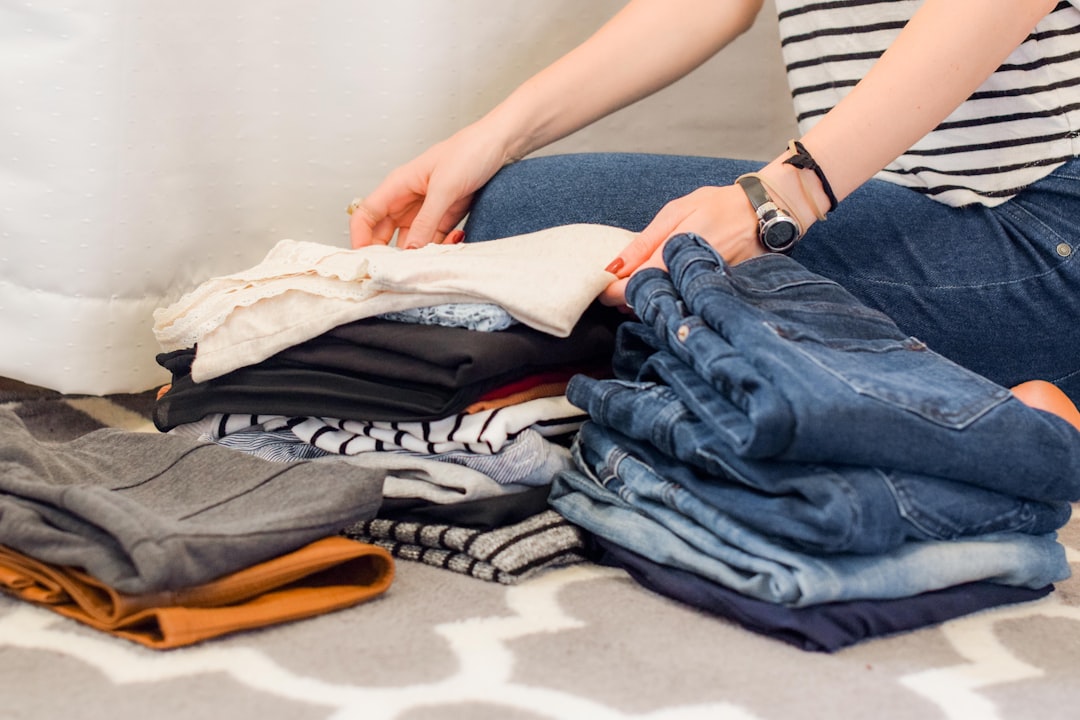Home Organization and Decluttering are transformative practices that extend beyond mere tidiness; they serve as therapeutic tools for enhancing mental well-being by addressing emotional clutter. This involves a deep introspection to release emotionally heavy attachments and clear the mind for a more intentional and fulfilling life. The process parallels physical decluttering, offering a holistic approach that manages both tangible possessions and intangible emotional burdens. It significantly impacts psychological well-being, with disorganized spaces exacerbating stress and affecting cognitive functions, while a well-ordered home environment promotes tranquility and order, reducing stress and improving emotional health. Regular decluttering and intentional living can lead to a healthier lifestyle, underscoring the importance of these practices for overall self-care, including the physical and emotional benefits of letting go of clutter and emotional baggage. Home Organization and Decluttering thus play a crucial role in creating a balanced life by fostering clarity, order, and emotional liberation.
Embark on a transformative journey towards emotional freedom by learning the art of decluttering, both physically and mentally. This comprehensive guide delves into the psychological effects of untidy spaces and offers practical strategies for releasing the emotional baggage that weighs you down. From categorizing belongings to adopting feng shui principles, discover how organizing your home can foster mental clarity and wellbeing. Explore the role of rituals, mindfulness techniques, and digital decluttering to enhance your living environment and overall health. Whether you’re navigating sentimental attachments or planning for a clutter-free future, this article provides actionable advice and insights on incorporating decluttering habits into daily life for sustained benefits. Join us as we explore the intersection where physical and emotional health converge, emphasizing home organization and decluttering as key to achieving lasting freedom.
- Understanding Emotional Clutter: The Unseen Obstacles to Freedom
- The Psychological Impact of a Disorganized Space
- Strategies for Identifying and Releasing Emotional Baggage
- Decluttering Your Home: A Step-by-Step Guide for Mental Clarity
- Categorizing Belongings: Emotional, Practical, and Neutral Items
- The Art of Letting Go: Emotional Attachments and Physical Spaces
Understanding Emotional Clutter: The Unseen Obstacles to Freedom
Decluttering one’s physical space can have a profound impact on mental well-being, but the process extends beyond the tangible objects that accumulate over time. Emotional clutter—the collection of unprocessed feelings, past traumas, and psychological baggage—can be just as detrimental to our sense of freedom and peace. This intangible clutter often goes unnoticed yet is a significant barrier to emotional liberation. It manifests in patterns of thought that keep individuals stuck, replaying negative self-talk or holding onto grudges. Home Organization and Decluttering practices not only involve sorting through physical items but also entail reflective exercises that encourage the release of these emotionally charged attachments. By confronting and processing these feelings, individuals can clear mental space, allowing for a more mindful and intentional approach to life. The act of decluttering one’s home can serve as a metaphor for this process, with each item discarded making room for new growth and opportunities. Similarly, in the realm of emotions, letting go of what no longer serves us creates an opening for emotional freedom and a more fulfilling existence. Engaging in Home Organization and Decluttering can thus be seen as a multifaceted journey toward well-being, encompassing both the physical and the psychological realms.
The Psychological Impact of a Disorganized Space
Cluttered spaces can have a profound psychological impact on individuals, influencing their emotional well-being and cognitive processes. A disorganized home environment often leads to increased stress levels, as the constant visual stimuli of untidy spaces can overwhelm the brain, making it difficult to focus and process information efficiently. This chronic stress can manifest in various ways, from heightened anxiety to decreased productivity and motivation. The mental effort required to navigate through clutter is substantial; it drains mental energy that could otherwise be directed towards more constructive and fulfilling activities.
Conversely, home organization and decluttering play a significant role in promoting a sense of calm and order within living spaces. By systematically organizing belongings and creating designated areas for different activities, individuals can experience a marked reduction in stress and an improvement in their overall emotional state. The act of decluttering involves more than just tidying up; it’s about making intentional choices about what to keep, what to let go of, and how to best utilize the available space. This process not only enhances the physical living conditions but also has a positive ripple effect on mental clarity and emotional freedom. Home organization, therefore, is an integral aspect of self-care and can contribute significantly to a healthier and more balanced lifestyle.
Strategies for Identifying and Releasing Emotional Baggage
Decluttering one’s living space can be a transformative process, offering both physical and emotional freedom. Similarly, identifying and releasing emotional baggage requires intentional strategies that mirror the principles of home organization and decluttering. To begin this journey, it’s crucial to become mindful of the emotions that are stored within. Just as one would survey a room filled with items, take stock of your feelings and experiences that have accumulated over time. A key step involves recognizing which emotions serve you positively and which may be holding you back. Once identified, employ techniques such as journaling to process these emotions, or talk to a trusted individual to gain perspective. This act of acknowledgment can lighten the emotional load, much like sorting through physical items and deciding what to keep, donate, or discard.
Incorporating organizational habits into your daily routine can facilitate this release of emotional baggage. Set aside time for reflection, where you can mentally ‘declutter’ by letting go of past grudges, regrets, or unhelpful thought patterns. Use the same approach as you would for physical decluttering: ask yourself if these emotions still serve a purpose in your life. If not, practice releasing them with the intention of making space for new, healthier emotions to take their place. Employ visualization techniques to imagine this release as a physical act, like letting go of a weighted ball and watching it soar into the open sky. By applying the structured methods of home organization to our emotional lives, we can create a more harmonious and open internal space, leading to a sense of liberation and peace.
Decluttering Your Home: A Step-by-Step Guide for Mental Clarity
Decluttering your home can significantly enhance your mental clarity, offering a sense of peace and order that often extends to other areas of life. The process begins with a strategic approach, setting aside ample time to focus on this task without distractions. Start by surveying each room, identifying items that serve a purpose versus those that merely accumulate dust. As you categorize belongings, consider their utility and the joy they bring; items that fail to meet these criteria should be donated or discarded.
Once you’ve sorted through your possessions, organize what remains thoughtfully. Group similar items together for ease of access and storage. Create labels for boxes and shelves to maintain order and reduce decision fatigue. After decluttering, take it a step further by implementing systems that encourage sustainable organization. Regular maintenance is key; dedicate time weekly or monthly to ensure clutter doesn’t reaccumulate. Home Organization and Decluttering are not just about tidying up; they’re about creating a living space that promotes mental clarity and emotional freedom, allowing you to live more intentionally and with greater focus on the aspects of life that truly matter.
Categorizing Belongings: Emotional, Practical, and Neutral Items
Emotional belongings often carry deep sentimental value, making it challenging to let go. These items can include photographs, keepsakes, and mementos that evoke memories and emotions. Home Organization and Decluttering practices recommend creating a system to process these items, acknowledging their significance while also considering their impact on current life. It’s important to differentiate between emotional items that bring joy and those that cause clutter or distress. By doing so, you can honor the past while making space for the present and future in your living environment.
In contrast, practical and neutral items serve specific functions within the household. Tools, kitchenware, and seasonal clothing are examples of such items that fall under the Home Organization and Decluttering purview. A practical approach involves regularly evaluating these objects to ensure they align with current needs and usage patterns. Determining whether an item is frequently used or outdated can guide the decluttering process, leading to a more efficient and functional home space. By categorizing belongings into emotional, practical, and neutral items, individuals can approach the decluttering process with intention and clarity, ultimately fostering an environment of emotional freedom gained through physical organization.
The Art of Letting Go: Emotional Attachments and Physical Spaces
Decluttering one’s physical space can be a profound reflection of emotional freedom gained, as it often mirrors the process of letting go of past attachments and cultivating mental clarity. The act of organizing one’s home is not merely an exercise in tidiness; it is a transformative journey that invites introspection and growth. As individuals sort through their belongings, they confront the emotional ties that bind them to certain objects, which can be a cathartic experience. By making conscious decisions about what to keep, what to donate, and what to discard, people create a living environment that supports their current lifestyle rather than one that’s anchored in the past. This deliberate process of home organization and decluttering not only simplifies daily life but also allows for the manifestation of new beginnings. It encourages individuals to adopt minimalist principles, fostering an atmosphere of peace and intention within their homes, which in turn can enhance overall well-being and emotional serenity. In doing so, they learn to distinguish between what serves them and what detracts from their sense of harmony and freedom, ultimately leading to a more intentional life.
Decluttering one’s home is more than a mere tidying exercise; it’s a profound step towards emotional freedom. As discussed, understanding the nature of emotional clutter—the unseen obstacles that tie us to our past—is crucial for initiating the journey to mental clarity. The psychological impact of disorganized spaces weighs heavily on our well-being, often without our conscious recognition. By employing strategic methods to identify and release the emotional baggage we carry, individuals can effectively transform their living environments into bastions of tranquility and focus. Categorizing belongings into emotional, practical, and neutral items sheds light on what truly serves us, allowing for more intentional living. The art of letting go of emotional attachments to physical spaces is a liberating process that, when approached with mindfulness, can lead to significant personal growth. In conclusion, home organization and decluttering are not just about creating an orderly space but also about fostering an environment conducive to emotional freedom, where one can thrive in the present moment, unburdened by the weight of the past.



